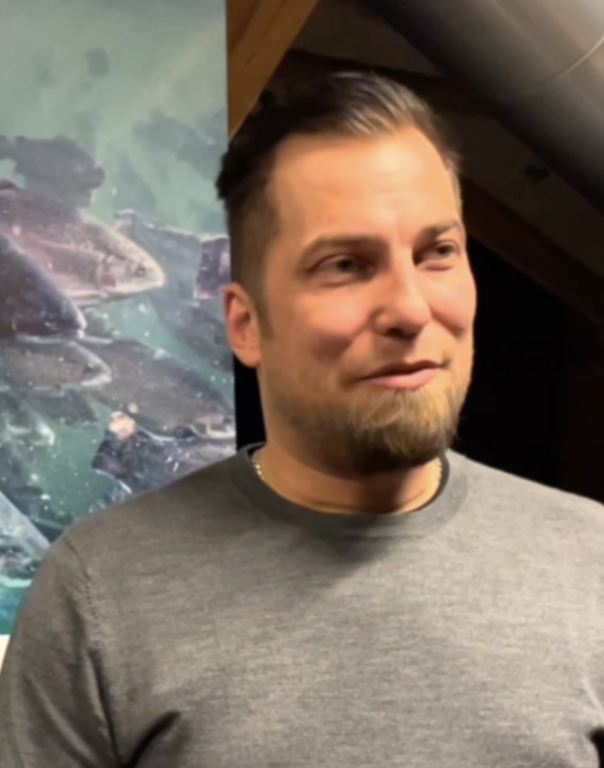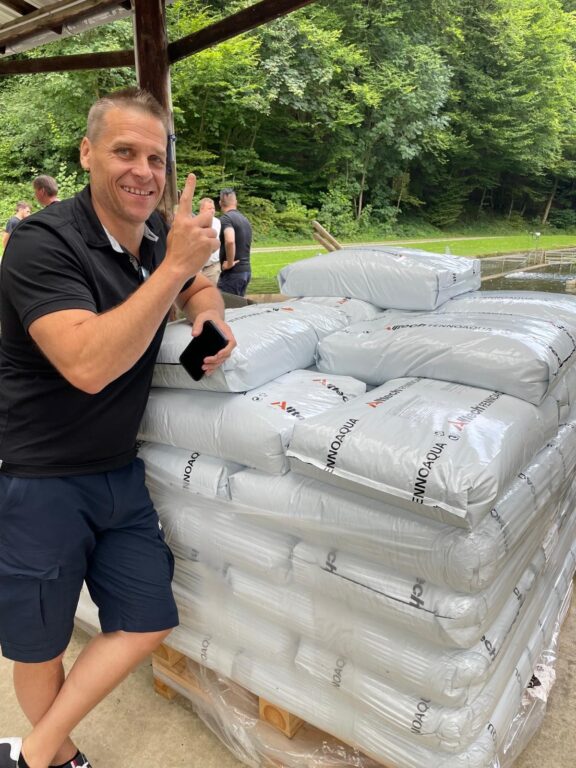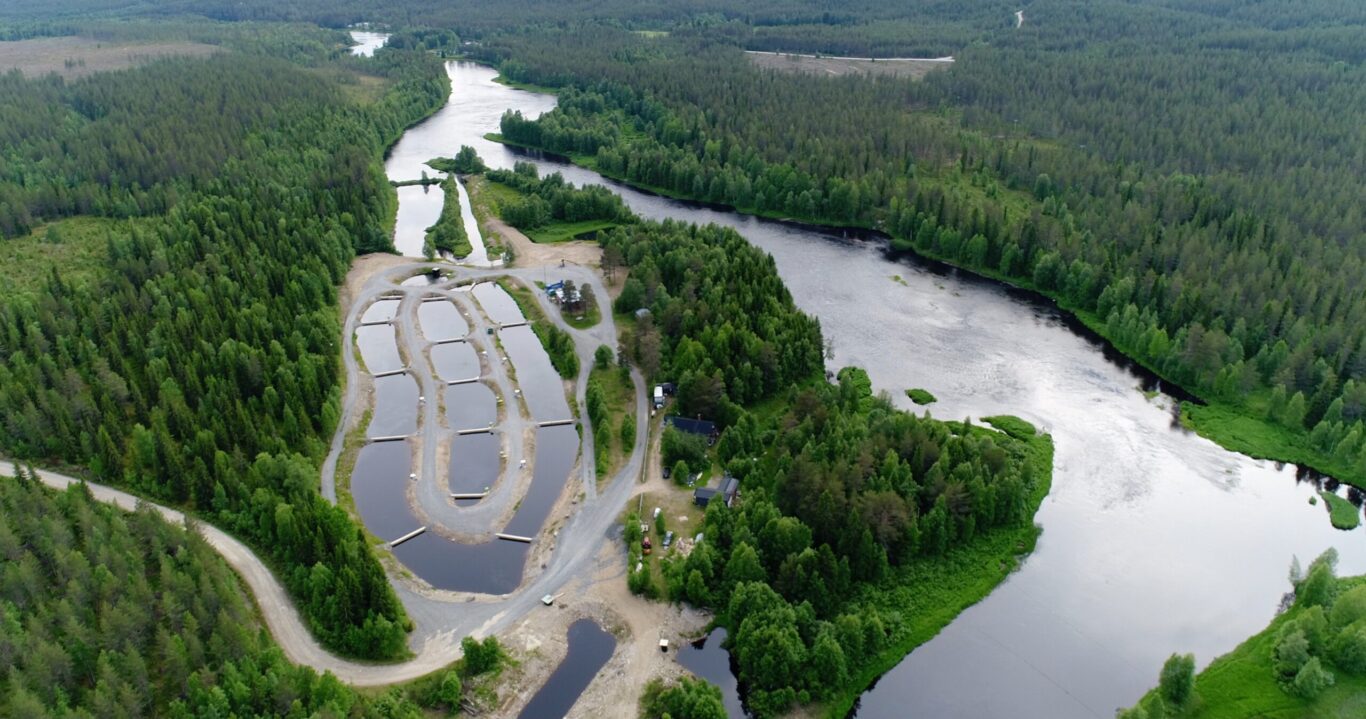End-of-season feed can reduce winter losses – fish farm Kalankasvatus Vääräniemi starts testing
This autumn, the Finnish fish farm Kalankasvatus Vääräniemi will start a project at its sites to test a new end-of-season feed recipe and different feeding levels. The project continues the tripartite cooperation between Alltech Fennoaqua, Kalankasvatus Vääräniemi, and fish supplier Kalavapriikki to develop the industry.
The idea for the new feed originated in the winter of 2023–2024 when exceptionally harsh weather conditions caused losses in fish farms throughout Finland. Cold winters are challenging and stressful for fish, and factors like water subcooling, currents, or what fish are fed with and how, can cause losses. Feed is only one of the possible factors, but Kari Vääräniemi started to wonder whether it could and should be worth changing the feed recipe.

Kari Vääräniemi
“Fish are poikilotherm and consume much less energy in cold water. However, they are fed almost with the same recipe regardless of the temperature, albeit with changes like lower rations because their need and ability to digest food significantly decreases as temperatures fall. I wondered whether we could change the recipe to provide the fish slightly less energy in the late autumn – early winter or to provide different proportions of energy sources compared to the summer feed to facilitate digestion.”
Fennoaqua set out to develop a new feed that will be tested this autumn. Testing will be carried out at two Vääräniemi fish farms with experience in subcooling and extreme conditions. In some ponds, the fish will be fed the new feed for the last month after mid-September, while in the other ponds, they will be fed the standard, conventional feed. When the water cools to eight degrees Celsius, feeding is, as usual, restricted and drastically reduced. In spring 2025, we will see if there are differences in winter losses between ponds and feeding.
“We can’t do anything about the cold weather and subcooled water but changing the feeding can help a little. We don’t expect revolutionary results, but even a small change would be important”, says Vääräniemi.

Tomi Kantola
“Kari practically challenged us to think of alternatives that could at least have some impact on the overwintering of the fish. He didn’t give up, even though we told him that conditions like subcooled water were beyond our control. Kari urged us to forget about the conditions and think about what would be best for the fish in harsh conditions. In the experiment, we both accept that we can’t eliminate the potential winter losses, but if we can reduce it by even a few percent, we’re on to something big. It’s a fascinating experiment, and if it shows even the slightest positive result, we will probably bring a new feed to the market. This kind of cooperation between breeder and feed mill is exactly what we value at Fennoaqua and want to do even more to deepen our customer relationships”, says Tomi Kantola, CEO of Alltech Fennoaqua.
Fish farming in northern conditions

Kalankasvatus Vääräniemi is owned by brothers Kari and Harri Vääräniemi.
“Our father started a small-scale fish farming business back in the 80s. Harri and I bought it from him in 2011 and established a limited company. In 2022, the ownership base expanded when the fish supplier Kalavapriikki became a shareholder”, Kari Vääräniemi says.
The company currently has ten fish farms in the main water basins of the Kemijoki, Iijoki, and Oulujoki rivers. In addition, the company has several natural feeding ponds where newly hatched fish fry are reared for one summer on natural resources.
“In addition to fish farms and natural feeding ponds, we have fish processing plants in Suomussalmi and Kuusamo. Although we have facilities in three water bodies, we operate in a fairly limited area in Kainuu, Northeast Finland, and Lapland.”
Kalankasvatus Vääräniemi produces food-grade fish like rainbow trout and European whitefish. They also produce restocking fish to safeguard fish populations in natural waters: European whitefish, Atlantic salmon and landlocked Atlantic salmon, rainbow trout, sea trout, and lake trout. In addition to the brothers, the company employs around 30 people.
Fennoaqua – feed and cooperation
The Vääräniemi brothers have used products by Fennoaqua and its predecessor, Raisioaqua, since fish farming began under their father. Kari Vääräniemi says things have always gone well, which is why they have so often used Fennoaqua products.
“Fennoaqua is good at listening to customers and their needs and ready to react to situations and changes. You get the feeling that for them, customers are valuable – they really are there for us.”
Vääräniemi also praises Fennoaqua’s R&D, which has already carried out several different feed trials and recipes in the past, in addition to the new feed under test. The experiments are always based on discussions between fish farmers and Fennoaqua on feed ingredients and prices. However, the focus is always on the growth and welfare of the fish.
“Discussions revolve around what the feed could cost, how it could be improved by adding or subtracting something from it, and how the change could make a difference. In this way, they can create a tailor-made feed to address specific conditions and their effects.”
Vääräniemi believes they have had the courage and enthusiasm to challenge and develop things, and Fennoaqua appreciates that.
“Fennoaqua doesn’t just sell feed, they explain what is being done and why. They are always willing to modify recipes and tailor feeds to different fish species and conditions.”